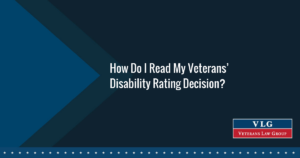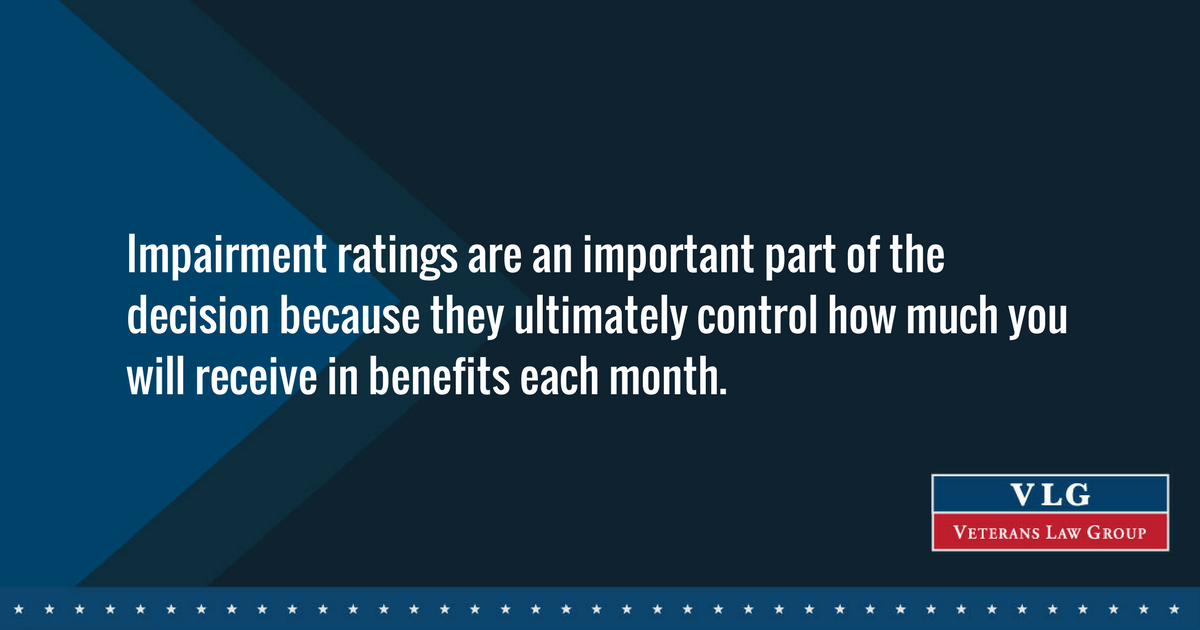Reading a Rating Decision
You served your country selflessly, but during your service you were injured or developed a condition that is still affecting your life today. After applying for veterans’ disability benefits through the U.S. Department of Veterans’ Affairs, you have finally received a decision about your application. Upon opening the decision, you will see two important pieces of information: Notification Letter and Rating Decision.

Notification Letter
The Notification Letter is usually stapled on top of the Rating Decision. The date on this notice is important because any additional information or an appeal of the decision (Notice of Disagreement) must be submitted within one year of the date on the letter. The letter will give a brief explanation of the VA’s decision on your claim and, if benefits are awarded, the effective (beginning) date of payments.
Rating Decision
The Rating Decision includes several sections: Introduction, Decision, Evidence, and Reasons for the Decision.
Introduction: The introduction identifies the veteran and his/her qualifying service.
Decision: This section lists all of your conditions and/or impairments, as identified by you or the VA Reviewer. This list can include expressly claimed issues, reasonably raised issues, and subordinate issues.
- An expressly claimed issue is a condition or impairment that you listed on your application for disability benefits.
- A reasonably raised issue is a condition or impairment that may not have been listed on your application, but is directly related to a condition or impairment that is listed. For example, if you listed diabetes as a service-connected impairment in your application for benefits and your medical records show that you also have vision problems related to the diabetes, the VA Rating Representative can take your vision problems into consideration, even though you did not specifically list vision problems as an impairment.
- A subordinate issue stems from a related condition or impairment. For example, a VA Rating Representative may consider additional aid or compensation for a spouse that is caring for a 100% disabled veteran.
The Decision section also indicates whether each condition/impairment was granted or denied service connection, the disability rating, and the effective date of each condition/impairment.
- Service-connection – Your injury or disease occurred or was aggravated during active duty or active duty for training, or inactive duty training.
- Disability rating – The VA created the Schedule for Rating Disabilities to help streamline compensation; it is intended to reflect the loss in earnings that a veteran may experience because of their impairments. Ratings range from 0% to 100%.
- Effective date of impairment – The date that compensation for your conditions/impairments will begin. Generally, this will be the date of the claim (or date you filed your intent to file application), but there are instances where a later effective date is appropriate.
Evidence: This section will include a list of all the evidence that was considered in making the decision to award or deny benefits. This section will also identify any evidence that was requested by the VA, but not received. It is important to compare this section to your own medical records and information. Often, the VA will not receive all of the medical evidence requested, which could lead to a decision that is inaccurate or fails to consider the severity of all of your impairments.
Reasons for the Decision: This is the most important section! Here, the VA Reviewer must include an outline of how the evidence was considered and the regulations used to arrive at the final decisions regarding service-connection, disability, ratings, and effective date.
It is important to review the above documents thoroughly. Your Veterans Service Officer (VSO) can help you understand your decision. Using their experience and knowledge of the regulations, they can review the decision to make sure that the VA followed the proper procedures; reviewed all relevant evidence; and made decisions based on that evidence.
If there is information missing, a clear error, or if you disagree with the decision based on service connection, rating of your impairment, or any other issue, your VSO may recommend that you submit additional information or appeal the decision by filing a Notice of Disagreement. You only have one year from the date on the Notification Letter to take action (without starting the process again from the beginning), so it is important that you review the ENTIRE decision as soon as you receive it!
Finding answers to your disability claims questions doesn’t have to be difficult. Take our free quiz today to determine what resources are available for your specific needs.
Additional Resources:
Schedule of Rating Disabilities


